Did Banks Subject to LCR Reduce Liquidity Creation?
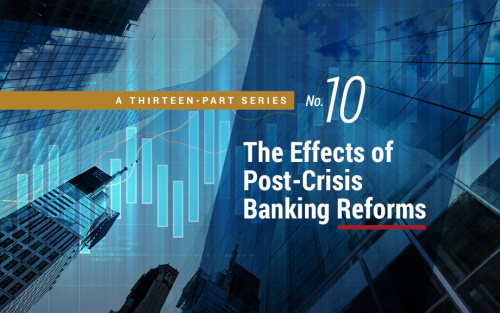
Banks traditionally provide loans that are funded mostly by deposits and thereby create liquidity, which benefits the economy. However, since the loans are typically long-term and illiquid, whereas the deposits are short-term and liquid, this creation of liquidity entails risk for the bank because of the possibility that depositors may “run” (that is, withdraw their deposits on short notice). To mitigate this risk, regulators implemented the liquidity coverage ratio (LCR) following the financial crisis of 2007-08, mandating banks to hold a buffer of liquid assets. A side effect of the regulation, however, is a reduction in liquidity creation by banks subject to LCR, as we find in our recent paper.
Leverage Rule Arbitrage

Classic arbitrage involves the same asset selling at different prices; the leverage rule arbitrage we study here involves assets of different risk levels requiring the same amount of capital. The supplementary leverage ratio (SLR) rule, finalized by U.S. regulators in September 2014, requires a minimum ratio of capital to assets at the largest U.S. banks. The floor is higher for more systemically important banks, but not for banks with riskier assets. That non-risk-based aspect of SLR was intentional, since the leverage limit was meant to backstop (“supplement”) risk-based capital rules in case banks underestimate their asset risk and overstate their capital strength. As policymakers have noted and bankers have warned, if the leverage rule is the binding capital requirement, banks can “arbitrage” the rule by selling safer assets and replacing them with riskier, higher-yielding ones. The findings of our recent staff report are consistent with those concerns.
What Happens When Regulatory Capital Is Marked to Market?
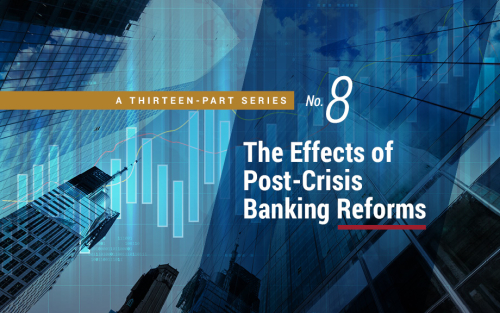
Minimum equity capital requirements are a key part of bank regulation. But there is little agreement about the right way to measure regulatory capital. One of the key debates is the extent to which capital ratios should be based on current market values rather than historical “accrual” values of assets and liabilities. In a new research paper, we investigate the effects of a recent regulatory change that ties regulatory capital directly to the market value of the securities portfolio for some banks.
Analyzing the Effects of CFPB Oversight
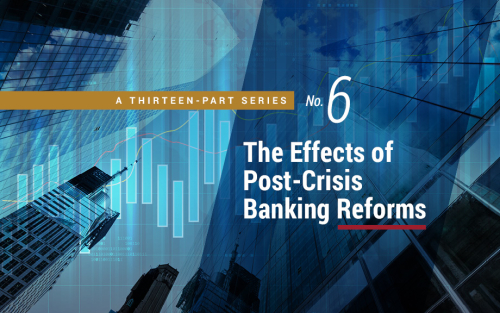
The Consumer Financial Protection Bureau (CFPB), created in 2011, is a key element of post-crisis U.S. financial regulation, as well as the subject of intense debate. While some have praised the agency, citing the benefits of consumer financial protection, others argue that its activities involve high compliance costs, increase uncertainty and legal risk, and ultimately reduce the availability of financial services for consumers. We contribute to this debate by investigating empirically whether the CFPB’s supervisory and enforcement activities have significantly affected the supply of mortgage credit, or had other effects on bank risk-taking and profitability
Changing Risk‑Return Profiles
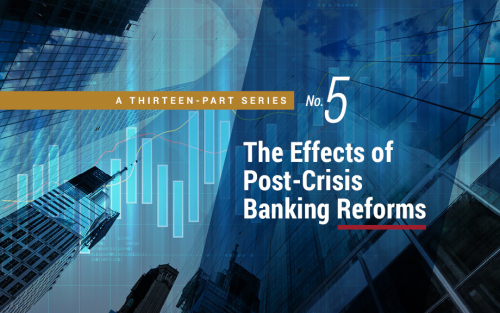
Are stock returns predictable? This question is a perennially popular subject of debate. In this post, we highlight some results from our recent working paper, where we investigate the matter. Rather than focusing on a single object like the forecasted mean or median, we look at the entire distribution of stock returns and find that the realized volatility of stock returns, especially financial sector stock returns, has strong predictive content for the future distribution of stock returns. This is a robust feature of the data since all of our results are obtained with real-time analyses using stock return data since the 1920s. Motivated by this result, we then evaluate whether the banking system appears healthier today, and if recent regulatory reforms have helped.
Resolving “Too Big to Fail”
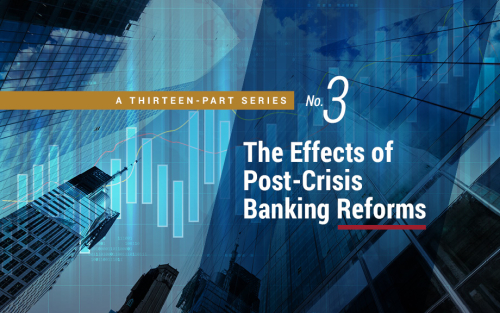
Many market participants believe that large financial institutions enjoy an implicit guarantee that the government will step in to rescue them from potential failure. These “Too Big to Fail” (TBTF) issues became particularly salient during the 2008 crisis. From the government’s perspective, rescuing these financial institutions can be important to avoid harm to the financial system. The bailouts also artificially lower the risk borne by investors and the financing costs of big banks. The Dodd-Frank Act attempts to remove the incentive for governments to bail out banks in the first place by mandating that each large bank file a “living will” that details its strategy for a rapid and orderly resolution in the event of material distress or failure without disrupting the broader economy. In our recent New York Fed staff report, we look at whether living wills are effective at reducing the cost of implicit TBTF bailout subsidies.
At the New York Fed: Thirteenth Annual Joint Conference with NYU‑Stern on Financial Intermediation
Better understanding of financial intermediation is critical to the efforts of the New York Fed to promote financial stability and economic growth. In pursuit of this mission, the New York Fed recently hosted the thirteenth annual Federal Reserve Bank of New York–New York University Stern School of Business Conference on Financial Intermediation. At this conference, a range of authors were invited to discuss their research in this area. In this post, we present some of the discussion and findings from the conference.
The Premium for Money‑Like Assets

Several academic papers have documented investors’ willingness to pay a premium to hold money-like assets and focused on its implication for financial stability. In a New York Fed staff report, we estimate such premium using a quasi-natural experiment, the recent reform of the money market fund (MMF) industry by the Securities and Exchange Commission (SEC).
Have the Biggest U.S. Banks Become Less Complex?

The global financial crisis, and the ensuing Dodd-Frank Act, identified size and complexity as determinants of banks’ systemic importance, increasing the potential risks to financial stability. While it’s known that big banks haven’t shrunk, the question that remains is: have they simplified? In this post, we show that while the largest U.S. bank holding companies (BHCs) have somewhat simplified their organizational structures, they remain very complex. The industries spanned by entities within the BHCs have shifted more than they have declined, and the countries in which some large BHCs have entities still include numerous “secrecy” or tax-haven locations.
New Report Assesses Structural Changes in Global Banking

The Committee on the Global Financial System, made up of senior officials from central banks around the world and chaired by New York Fed President William Dudley, recently released a report on “Structural Changes in Banking after the Crisis.” The report includes findings from a wide-ranging study documenting the significant structural adjustments in banking systems around the world in response to regulatory, technological, and market changes after the crisis, while also assessing their implications for financial stability, credit provision, and capital markets activity. It includes a new banking database spanning over twenty-one countries from 2000 to 2016 that could serve as a valuable reference for further analysis. Overall, the study concludes that the changed regulatory and market environment since the crisis has led banks to alter their business models and balance sheets in ways that make them more resilient but also less profitable, while continuing their role as intermediaries providing financial services to the real economy.










 RSS Feed
RSS Feed Follow Liberty Street Economics
Follow Liberty Street Economics